- Feb 10, 2021
- 8,374
- 10,794

Research Reveals Larissa Latynina Has a Previously Unknown Medal Which Puts Her Ahead of Simone Biles in the All-Time Medal Rankings
The long-running question of the “missing” 7th event from the 1954 World Championships has finally been solved.
 themedalcount.com
themedalcount.com
It has been discovered that at the 1954 World Championships medals were awarded in a previously unknown 7th event. Gymnasts who won on this particular event have had their medal wrongly omitted from their competitive resumes for decades. One of the gymnasts impacted by this was Larissa Latynina.
Larissa Latynina is the most decorated Olympic athlete in women’s artistic gymnastics (WAG). With 18 medals at the Olympics Latynina ranks #1 on the all-time medals list in Olympic WAG. At the World Championships Latynina has 14 medals which places her #4 in the rankings for most medals at the World Championships in WAG.
Simone Biles currently has 25 medals at the World Championships which places her #1 in the rankings for WAG. At the Olympics Biles has 7 medals which puts her at #9 in the Olympic medal rankings for WAG.
The math is simple:
Larissa Latynina: 18 + 14 = 32 medals
Simone Biles: 25 + 7 = 32 medals
Latynina is the most decorated gymnast at the Olympics while Biles is the most decorated gymnast at the World Championships. But when their medals are combined, they are ironically in a dead tie.
Name Worlds Olympics Total Simone Biles 25 7 32 Larissa Latynina 14 18 32
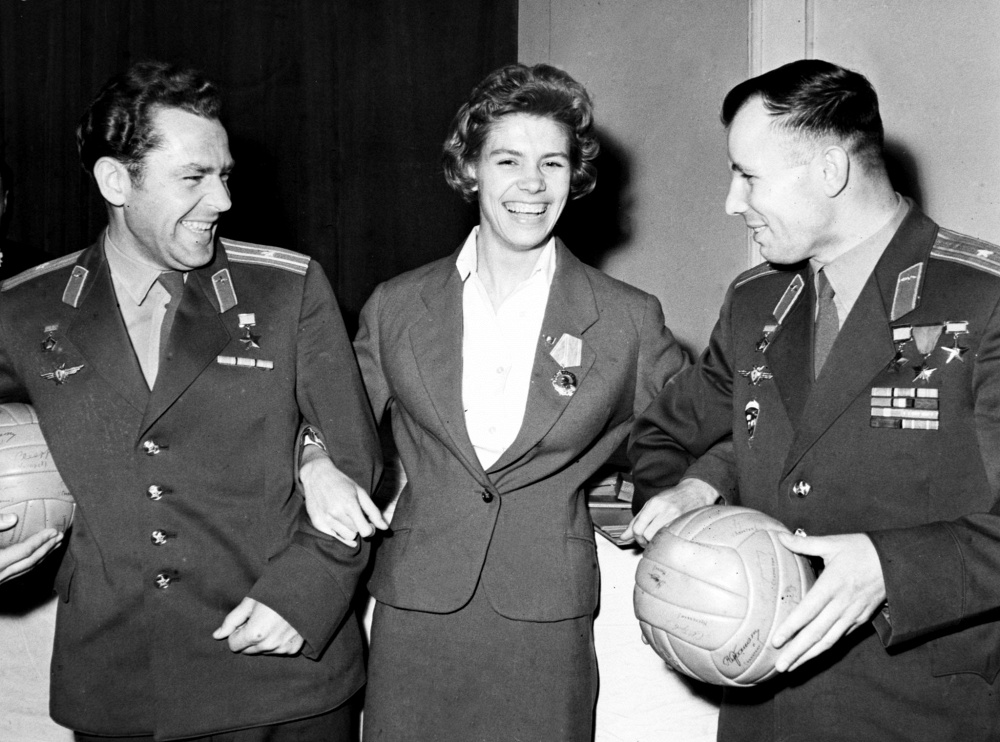
Larissa Latynina (center) with cosmonauts German Titov (Left) and Yuri Gagarin (right).
That was until now when new information surfaced that Latynina has a previously uncounted extra medal at the 1954 World Championships. This would give her 15 career medals at the World Championships and increase Latynina’s tally to 33 career medals. Thus giving her the lead over Simone Biles in the all-time medal rankings by just a single medal.
The medal in question came in an event known as Team Portable Apparatus or “Team-PA” that has since been discontinued. This event was contested at both the 1952 and 1956 Olympics and gymnasts have officially recognized medals from these Olympic Games in Team-PA. This includes Larissa Latynina who has an Olympic medal in Team-PA in 1956 and it is one of her 18 career Olympic medals.
At the time the World Championships was held only once every four years. In the 1950s the World Championships were held only in the years 1950, 1954, and 1958. Gymnastics history aficionados who track the 1950s have long been fascinated with a particular question. If Olympic WAG had medals in Team-PA at the Olympics in both 1952 and 1956, what about the World Championships in 1954? It never made sense that the Olympics would have 7-medals in WAG for 1952 and 1956, while the World Championships seemingly only had 6-medals in 1954.
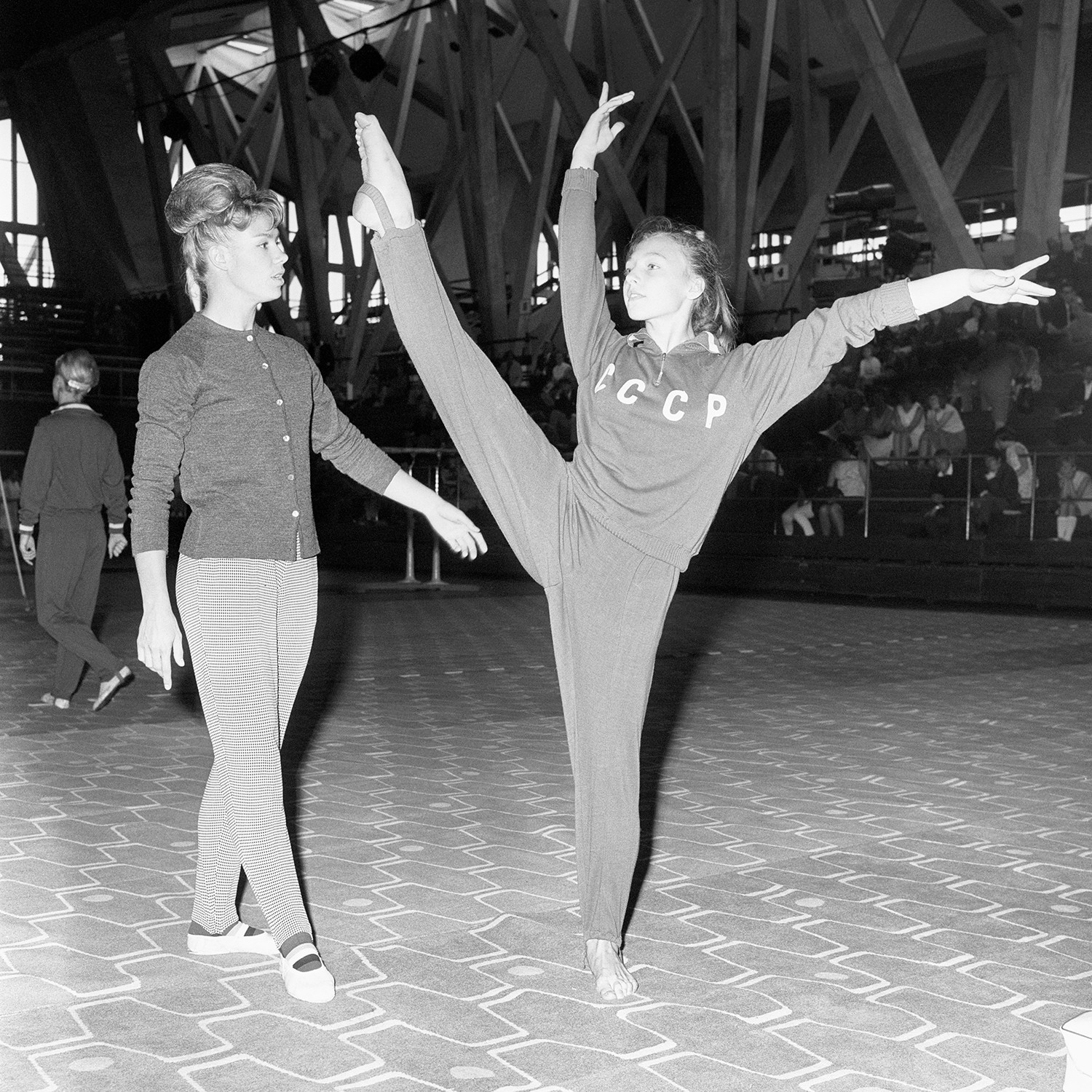
Larissa Latynina coaching Hall of Fame gymnast Natalia Kuchinskaya
It has always been known that Team-PA events were held at the 1954 World Championships and the resulting scores were even recorded in the official record book. Team-PA scores were even used to calculate the final standings in the traditional team competition. The source of the confusion was how these scores were used for awarding medals in other events. Prior to the late 1960s different gymnastics events were contested simultaneously.
In the modern era different gymnastics events are contested one at a time and a gymnast must repeat her routines each time if she wants to win medals in the team competition, all-around, and uneven bars. This was not how things were done prior to the 1968 Olympics. There were no Event Finals or All-Around Finals back then. Instead, the gymnasts with the highest scores in these events were awarded medals based on their performances in the team competition.
Gymnastics was forced to abolish this ruleset after the IOC objected to the concept that gymnasts could win multiple medals at once.
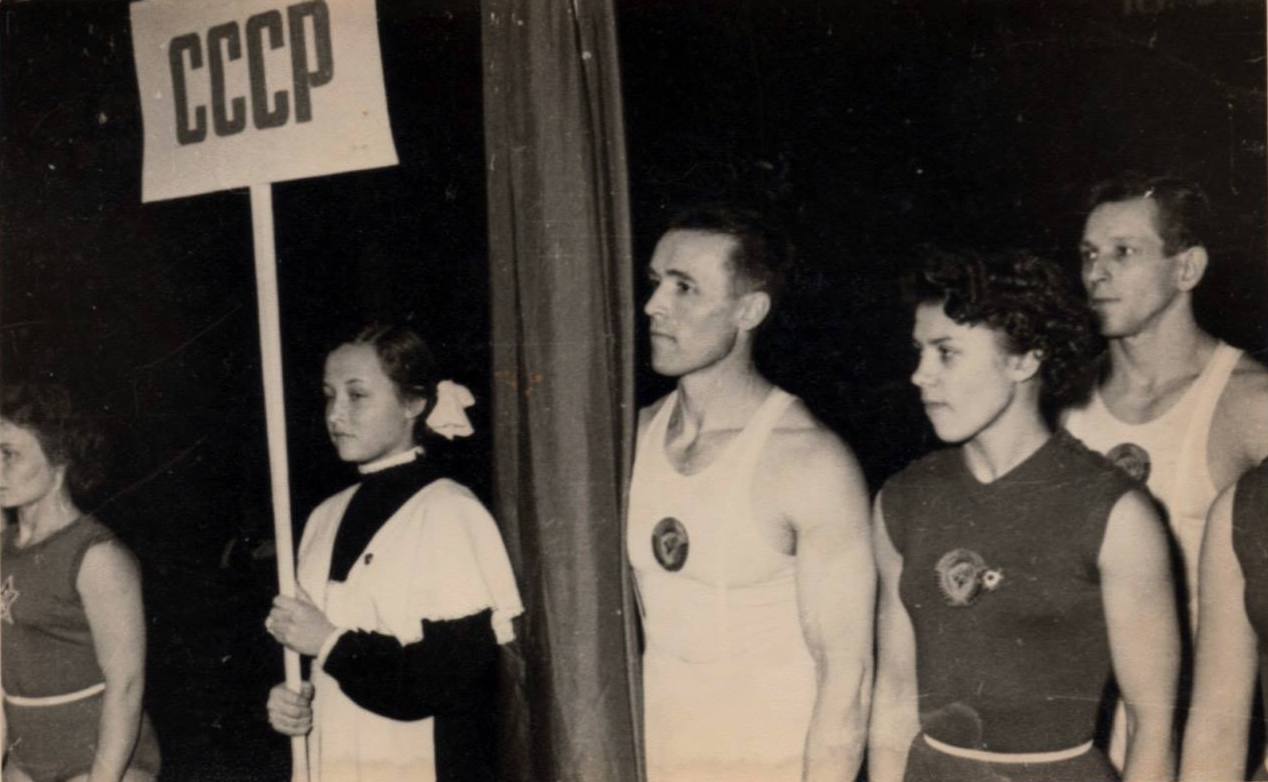
Larissa Latynina (right)
This old format is why the 1954 World Championships has All-Around standings from 1st place to 126th place. There was no top-36 or top-24 back then. In the 1950s and 1960s All-Around standings were able to rank all gymnasts in attendance because there was no such thing as a “finalist” in the individual events. The question was, when gymnasts competed at the 1954 World Championships, did they log routines with one team medal at stake, or was there a second team medal at stake in the Team-PA category?
The answer to the long-running question of the 1954 World Championships and Team-PA was finally solved by Gymnastics-History* which is run by the widely popular and highly respected gymnastics commentator known as “Uncle Tim.”
*Note: To avoid confusion, there are two websites known as “Gymnastics History.” There is gymnasticshistory.co.uk which covers British history, and gymnastics-history.com which is run by Uncle Tim. In the past I’ve referenced the amazing work of both websites on TMC.
Uncle Tim currently has a series on his website where he is going though all the various gymnastics competitions of the past using only the most official sources he can find such as newspaper coverage from the time period, official event rule books, and FIG documents to recap the competitions using primary sources from the era.

As part of his process Uncle Tim locates such documents in Europe, ships them to the United States, and then translates them. The process of finding and shipping such material comes at great personal expense and is a time consuming affair which is why I encourage TMC readers to support Uncle Tim’s work and contribute to his donations page to help him continue it.
In February Uncle Tim completed his research on the 1950 World Championships* and wrote several articles on that particular competition. Among Uncle Tim’s revelations was he was able to confirm that like the 1952 and 1956 Olympics, the 1950 World Championships had a separate team medal for Team-PA. In 1950 Sweden had taken gold, the silver went to Yugoslavia, while the bronze medal had gone to France. Up until then these medals had not been properly credited to the gymnasts who won them.
*Uncle Tim wrote six (!!!) articles on the 1950 World Championships. The links to them can be found here.
By this point every other competition of the era had confirmation regarding the status of Team-PA. It was confirmed for the years 1950, 1952, and 1956. It was all but certain that it would be true for 1954 as well. It was roughly a month ago that Uncle Tim tracked down a rule book from the 1954 World Championships and it was last week that it finally arrived in the mail. While Uncle Tim has not yet published his series on the 1954 World Championships, he did message me the details of what he found.*
*I must emphasize that 100% of the credit for this article goes to Uncle Tim as it was entirely his research that made this discovery possible, and he was kind enough to let me reveal details of what he found. Uncle Tim offered to uploaded a copy of the 1954 French rule book so TMC readers can read it for themselves. The rulebook can be found here.
The contents of the rulebook clearly indicate that Team-PA had its own awards. Meaning like the 1950 World Championships, the 1952 Olympics and the 1956 Olympics, the 1954 World Championships awarded medals in two different team events in WAG. Medals were awarded based on who won the traditional team event, and a separate medal was awarded for achieving the highest scores in Team-PA.

Team-PA was effectively the same thing as group rhythmic gymnastics. Whereas today rhythmic gymnastics, women’s artistic gymnastics, and men’s artistic gymnastics are three separate sports with three separate pools of athletes, this wasn’t the case in the early 1950s. In the 1940s and early 1950s not only did female gymnasts compete on the four standard events, (vault, uneven bars, balance beam, and floor exercise), they also trained on events such as high bar, pommel horse, rings, and parallel bars. Events that today are now exclusive to men’s gymnastics. On top of that, they competed in Team-PA which was identical in concept to modern rhythmic gymnastics.
In the modern era men’s artistic gymnastics, women’s artistic gymnastics, and rhythmic gymnastics are the three most high-profile disciplines in FIG. But for the early years of Latynina’s career she and her generation had to perform events in all three of these disciplines.
The big news story is that Larissa Latynina does have a previously uncounted medal that will allow her to surpass Simone Biles. But this was a team event. In 1954 countries had teams of eight which means 24 total gymnasts have a gold, silver, or bronze medal that is missing from their official tally.
Changing medal results from the 1950 World Championships would have only a minor impact on the WAG record book because virtually all of the top gymnasts were absent from this competition. But 1954 was different.
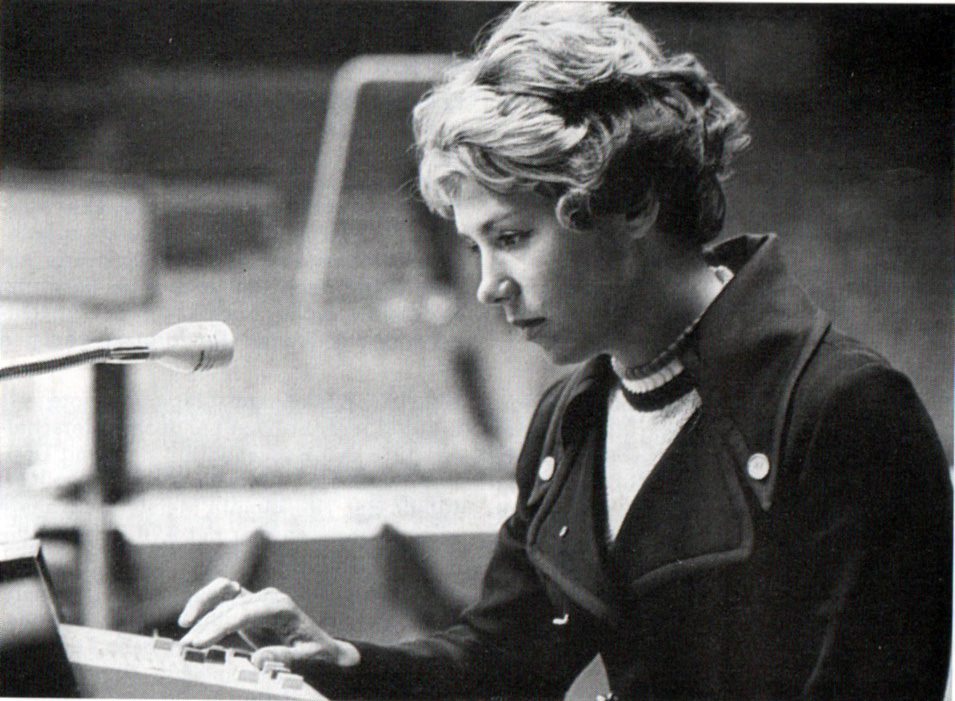
Larissa Latynina as a judge
Larissa Latynina is by no means the only gymnast who needs to have her official medal tally increased by a single medal. In fact, she isn’t even the only Hall of Fame gymnast who is impacted by Team-PA results at the 1954 World Championships. Gymnasts on the all-time Olympic medals list ranked #1 (Latynina), #3 (Agnes Keleti), #7 (Sofia Muratova), #15 (Olga Tass), #15 (Tamara Manina) and #23 (Erzsebet Gulyas) all have missing Team-PA medals from 1954.
Not only will Latynina surpass Simone Biles in the all-time medal rankings, Nastia Liukin will be surpassed by Tamara Manina and Nadia Comaneci will be surpassed by Agnes Keleti. It is the most significant overhauls to the all-time medals list that WAG will ever experience. The 24 gymnasts of 1954 are as followed:
Hungary (Gold Medal): Edit Perenyi, Erzsebet Gulyas, Alice Kertesz, Eva Banati, Ilona Banhegyi, Olga Tass, Laszlone Daruhazi, Agnes Keleti
Soviet Union (Silver Medal): Galina Shamrai, Nina Bocharova, Maria Gorokhovskaya, Galina Minaicheva, Larissa Latynina, Tamara Manina, Pelageya Danilova, Sofia Muratova
Sweden (Bronze Medal): Evy Berggren, Ann-Sofi Pettersson, Hjordis Nordin, Karin Lindberg, Gunbritt Broman, Vanja Blomberg, Eva Ronstrom, Doris Hedberg
These gymnasts lived very long lives. Many of them are still alive and well. Most notably Larissa Latynina (age 87) and Agnes Keleti (age 101) who still function as public figures in their respective countries. Many of the others passed away only very recently including Evy Berggren (December 2018), Erzsebet Gulyas (June 2019), Edit Perenyi (December 2019), Olga Tass (July 2020), Nina Bocharova (August 2020), Karin Lindberg (December 2020), Eva Ronstrom (October 2021), and Galina Shamrai (February 2022).

Latynina coaching Olga Bicherova who won the All-Around at the 1981 World Championships
Even though many of the gymnasts involved in this event were still alive to tell their story, their accomplishments and resulting Team-PA medals still seemed to have been collectively forgotten.
It was never intended for Larissa Latynina’s Team-PA medal at the 1954 World Championships to be the medal that sets her apart from Simone Biles. Speculation within the gymnastics community over the missing Team-PA medals from the 1950 and 1954 World Championships predates the career of Simone Biles. It was one of the great gymnastics mysteries that has finally been solved. Nor did gymnastics fans ever expect Simone Biles and Larissa Latynina to find themselves in a tie for total medals.
Biles was expected to surpass Latynina in all-time medals by a comfortable margin at the Tokyo-2021 Olympics. But when Biles was forced to withdraw on most of her events during Tokyo-2021, the unlikely result produced a tie for first place on the all-time medal rankings that no one expected to happen. Before last year the possibility of Latynina having a previously unknown 33rd medal had no bearing on who would be the most decorated gymnast in the history of the sport.
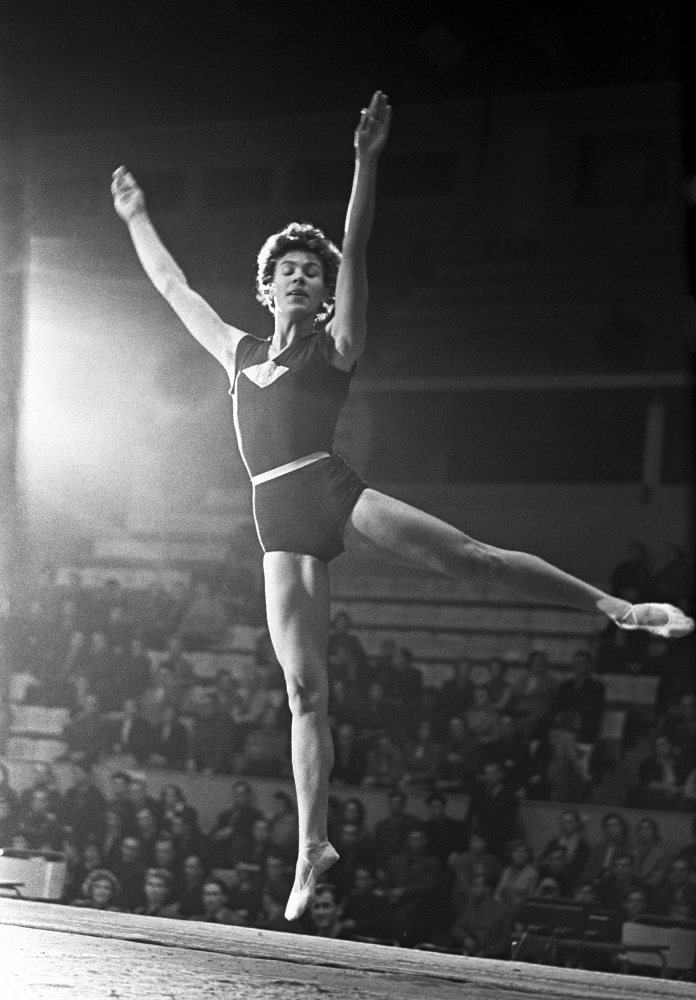
It should be pointed out that Simone is still technically the medal leader (32 vs 31) in the six traditional events (team, all-around, vault, bars, beam, and floor). It would still be accurate to call Simone Biles the all-time medal leader in the standard gymnastics events. But in Latynina’s defense, it is hard to justify not counting 1954 Team-PA as a genuine medal when this very same event is treated as a legitimate medal at both the 1952 and 1956 Olympics.
As things stand now, crediting Latynina with only 32 medals creates a contradiction where a discontinued event is officially counted at the Olympics, but not the World Championships from the very same Olympic quad. For the sake of consistency, Latynina should be credited with either 31 or 33 medals. But to credit Latynina with only 31 medals is problematic because it involves rewriting the Olympic record book and discounting an official Olympic medal. Which is why even the most fervent supporters of Simone Biles would find it more reasonable to alter our interpretation of the 1954 World Championships to maintain consistency with the Olympics as opposed to doing things the other way around.
It is inevitable that readers responding to this story will highlight the absurdity of Latynina being able to count a discontinued event, that she had seven chances to medal in a single competition, and there was no such thing as an All-Around Finals or Event Finals in her era. Those were all huge advantages that Latynina had in her era and are legitimate arguments to make while defending Simone Biles.
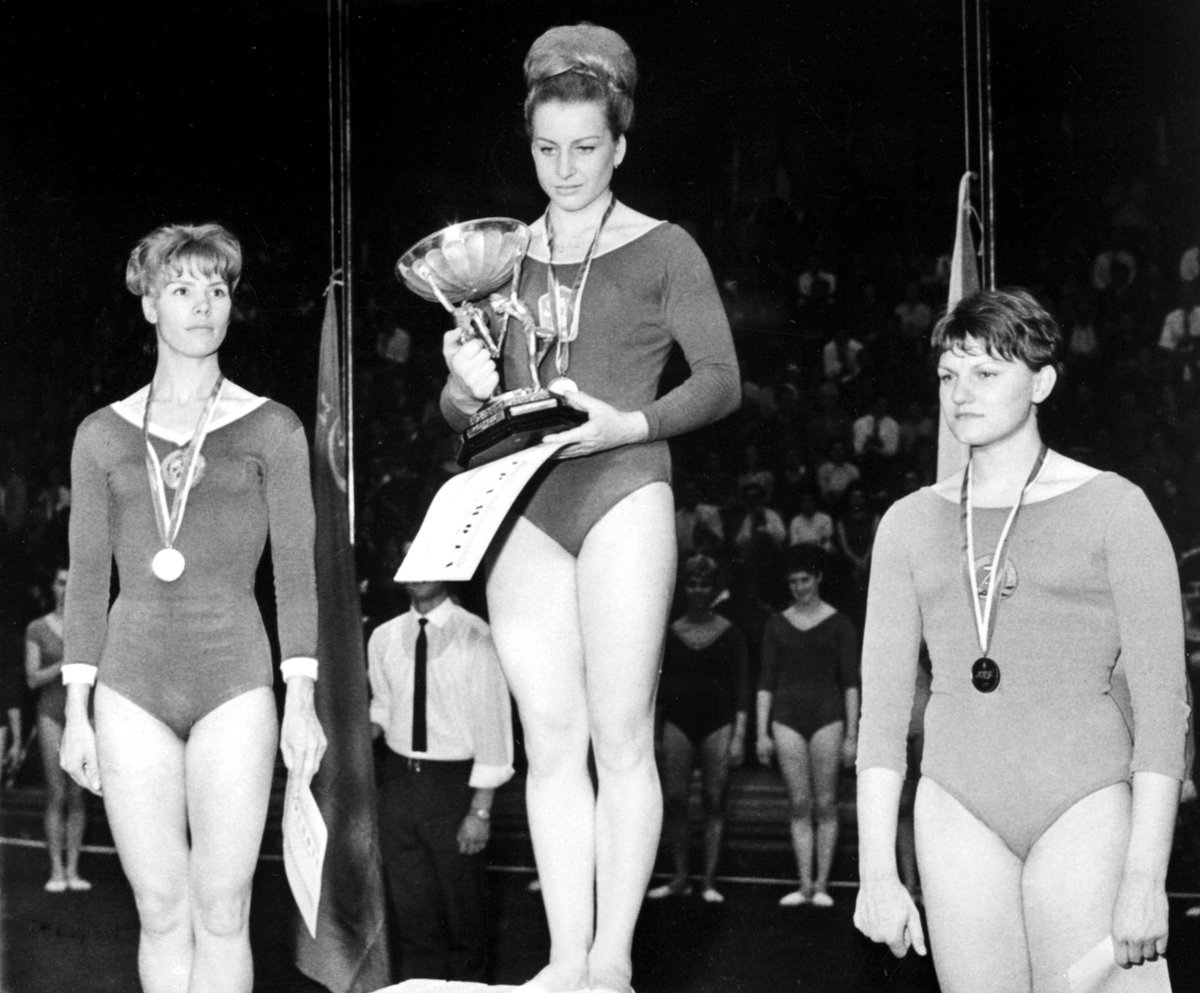
Larissa Latynina (L), Vera Caslavska (M), and Birgit Radochla (R)
But it should also be noted that Simone Biles has a massive advantage of her own. Latynina competed in an era where the World Championships were held just 1x every 4 years. Biles competes in an era where this competition is held 3x every 4 years. The World Championships didn’t start being held with such frequency until 1991. Of the six gymnasts with 12 or more medals at the World Championships, Larissa Latynina is the only one who predates the 1990s.
| Name | Worlds Debut | Total Medals |
|---|---|---|
| Simone Biles | 2013 | 25 |
| Svetlana Khorkina | 1994 | 20 |
| Gina Gogean | 1992 | 15 |
| Larissa Latynina | 1954 | 14 or 15 |
| Lavinia Milosovici | 1991 | 13 |
| Aliya Mustafina | 2010 | 12 |
Regardless of whether Larissa Latynina has 33 or 32 medals, regardless of whether Simone ranks #1 or #2 on the all-time medals list, this will do little to undercut Biles’ status as the gymnast most people select for the greatest of all-time. The only difference this story really makes is who is technically the medal leader in WAG history. And while this article covers the dynamic between Simone Biles and Larissa Latynina, the revelation regarding Team-PA unveils dozens of gymnasts from 1950 and 1954 who deserve to have one more medal listed on their official medal tally.